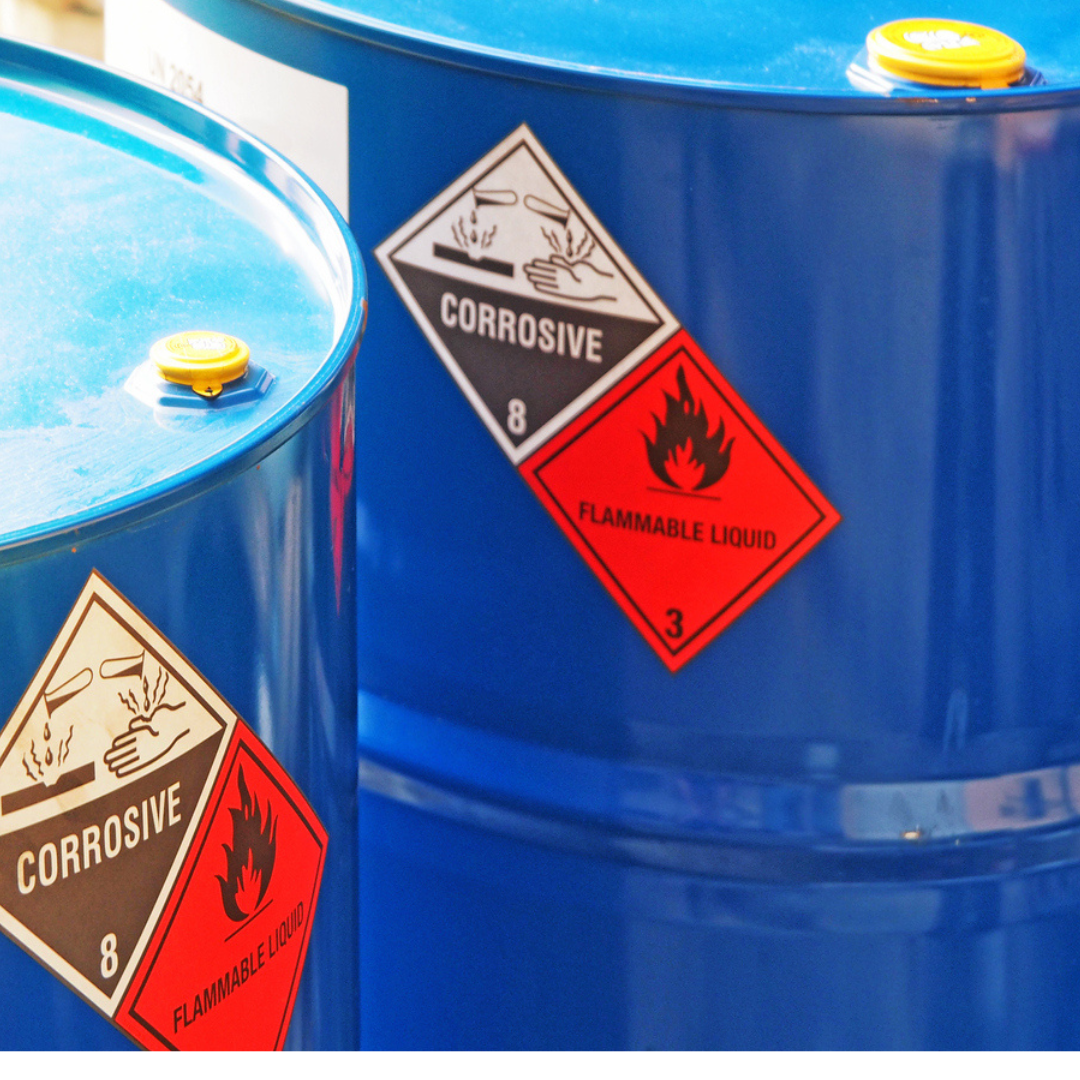
When transporting hazardous materials, safety is a top priority. Dangerous goods (DG) are substances that can pose significant risks to people, property, and the environment. These materials can be explosive, toxic, flammable, corrosive, or radioactive. To ensure these substances are handled and transported safely, international regulations classify dangerous goods into different categories. One of the key ways dangerous goods are categorised is through Packing Groups (PG), which help define the level of risk a substance presents during transportation.
In this blog post, we’ll explain what packing groups are, how they’re determined, and why they’re so important for safely transporting hazardous materials.
What is a Packing Group?
Packing Groups (PG) are used to classify dangerous goods based on their level of risk. This classification helps ensure that hazardous materials are packaged, labelled, and transported safely, reducing the likelihood of accidents or environmental damage. There are three primary packing groups:
Packing Group I (PG I) – High Danger
Substances in this category present the highest level of risk. They are extremely dangerous and require the most robust packaging to prevent spills, leaks, or accidents. Materials in PG I are often highly toxic, flammable, or corrosive. These substances can cause severe harm with minimal exposure. Packaging for PG I goods must be specially designed to withstand extreme conditions and prevent any accidental release. Examples of PG I substances include certain chemicals, explosives, and highly volatile liquids like concentrated acids or solvents.
Packing Group II (PG II) – Medium Danger
PG II substances are still hazardous but pose a lower risk than those in PG I. They require strong packaging and safety measures, though the level of precaution is less stringent than for PG I materials. Examples of PG II goods include flammable liquids (such as diesel fuel), certain industrial chemicals, and materials that can cause irritation or injury. These goods are dangerous but typically more manageable than PG I substances.
Packing Group III (PG III) – Low Danger
Substances in PG III are considered the least dangerous, although they still require appropriate packaging and safety precautions. The risks associated with PG III goods are lower than those of PG I or PG II materials, but they can still be hazardous. Packaging for PG III goods is less demanding compared to PG I or PG II, but the materials still need to be handled with care. Examples of PG III substances include household chemicals, some solvents, and materials that are harmful but less toxic.
How Are Packing Groups Determined?
Packing groups are assigned to substances based on several factors that relate to the material’s hazards. Some of the key characteristics considered include:
Toxicity: How harmful a substance is when it comes into contact with skin, eyes, or when inhaled or ingested. Highly toxic materials typically fall into PG I, while less toxic substances might be assigned to PG II or III.
Flammability: How easily a substance can catch fire. Highly flammable liquids like gasoline or alcohol are classified as PG I or PG II, depending on their flash point (the temperature at which they release enough vapour to ignite). Less flammable or non-flammable materials may be assigned to PG III.
Corrosiveness: How capable a substance is of causing damage to living tissue or other materials. Corrosive substances like strong acids are typically classified as PG I or PG II based on their strength.
Reactivity: Some materials can react violently under certain conditions, such as explosive reactions or dangerous heat release. Highly reactive substances often fall under PG I.
Radioactivity: Materials that emit ionising radiation (such as uranium or certain medical isotopes) are usually assigned to PG I, given the serious health risks they pose.
Why Are Packing Groups Important?
Packing groups play a crucial role in ensuring the safe transport of dangerous goods. Here’s why they matter:
Safe Handling and Packaging: The packing group classification determines what kind of packaging is required for a specific substance. For example, PG I materials require highly durable and secure containers, while PG III substances can be packaged in less robust containers. Proper packaging minimises the risk of spills, leaks, or accidents during transport.
Labelling and Identification: Dangerous goods need to be clearly labelled with hazard symbols that indicate their risks (flammability, toxicity, corrosiveness, etc.). Each packing group also has specific labelling requirements, helping handlers quickly assess the level of danger associated with a substance. PG I substances, being the most hazardous, will have the most prominent warnings, while PG II and PG III materials will have less intense labelling.
Transportation Regulations: Different transport methods (by road, sea, or air) have specific regulations based on the packing group. For example, PG I materials may be subject to more restrictions, such as being prohibited from traveling on passenger flights. PG II and PG III substances have more relaxed regulations but still require certain precautions.
Emergency Response: In the event of an accident or spill, the packing group helps emergency responders understand the level of risk involved and the best way to handle the situation. For example, knowing that a material is in PG I allows responders to anticipate more severe health and environmental risks and take the appropriate measures to contain the incident.
Real-World Application of Packing Groups
The concept of packing groups is critical not just in industrial settings, but also in everyday life. Many products we use regularly, like cleaning supplies, batteries, or certain medicines, are considered dangerous goods and fall into one of the packing group categories. For instance, a bottle of cleaning solvent may be a PG III material, while certain industrial chemicals may be PG I or II. Understanding packing groups helps ensure that products are stored and transported safely, whether by air, sea, or road.
